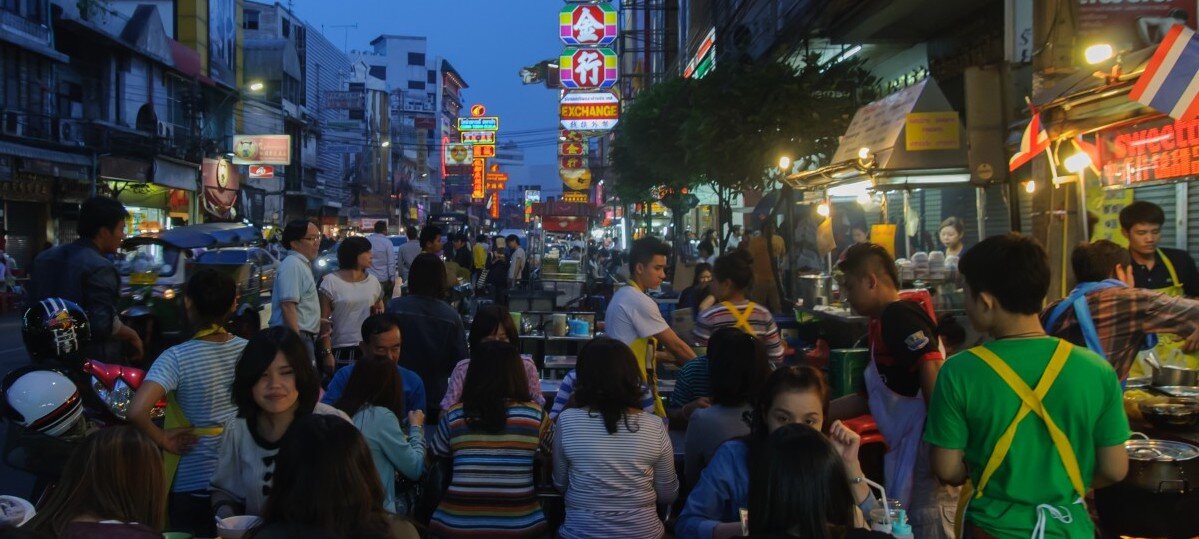Urbanization and Migration
Instructors
Dr. Bhanubhatra Jittiang [bhanubhatra.j@chula.ac.th]
Dr. Jiraporn Laocharoenwong [jiraporn.la@chula.ac.th]
Course Description
Migration has a long historical connection with the city. In the past decades, globalization has volumized the movement of the people and significantly contributed to rapid urbanization around the world. Migrants contribute to cultural diversity and multiple identities in the city. The close connection between migration and the city, therefore, demands a new approach for the simultaneous consideration of both topics at the same time. This course focuses on migration-city nexus by stressing how migration shapes cities and how the city shapes the everyday lives of migrants. Students will explore the causes of the movement, regimes governing human mobility, and why migration matters for the city. At the same time, students will also engage with the literature on the history of urban migration and the everyday lives and experiences of migrants in the city.
Learning Outcomes
By the end of the course, students are able to:
1) understand concepts related to urbanization and migration and their connection
2) critically investigate the linkages between empirical evidence and abstract concepts on migration-city nexus
3) apply knowledge from the course to make sense of real-world events.
Course Contents
Week 1 - Introduction (Jiraporn/Bhanubhatra)
Week 2 - Who immigrates and why do people move? (Bhanubhatra)
Week 3 - What are the patterns of movement? (Bhanubhatra)
Week 4 - What are the regimes governing human mobility? (Bhanubhatra)
Week 5 - What is the city and why does it matter? (Bhanubhatra)
Week 6 - Local and global cities (Bhanubhatra)
Week 7 - Right to the city (Bhanubhatra)
Week 8 - Midterm Exam
Week 9 - History of migration into the city (Jiraporn)
Week 10 - How does the city shape the lives of migrants? (Jiraporn)
Week 11 - What are the practices of living in the city? (Jiraporn)
Week 12 - City, citizenship, and sense of belonging (Jiraporn)
Week 13 - Dwelling, living, and conviviality (Jiraporn)
Week 14 - Field visit (Jiraporn/Bhanubhatra)
Week 15 - Conclusion (Jiraporn)
Learning and Teaching Methods
This course employs blended learning and teaching methods, involving lectures, discussion, and a field visit. Students will critically engage with class topics through group discussions, activities, and writing assignments. Students should bring any questions about the readings and real-world events to class and discuss them with your classmates and professors.
Learning Resources
Caldeira, Teresa. 2000. City of Walls: Crime, Segregation and Citizenship in Sao Paulo. Berkeley, CA: University of California Press.
Davis, Mike. 2007. Planet of Slums. London: Verso.
De Certeau, Michel de. 1980. The Practice of Everyday Life. Berkeley, CA: University of California Press.
Harvey, David. 2012. Rebel Cities: From the Right to the City to the Urban Revolution. London: Verso.
Mamdani, Mahmood. 1996. Citizens and Subjects. Princeton, NJ: Princeton University Press.
Massey, Douglas S. 1999. “Why Does Immigration Occur? A Theoretical Synthesis.” Pp. 34-52 in The Handbook of International Migration: The American Experience, edited by C. Hirschman, P. Kasinitz, and J. DeWind. New York: Russell Sage Foundation.
McNeill, William H. 1984. “Human Migration in Historical Perspective.” Population and Development Review 10(1): 1-18.
Sassen, Saskia. 2006. Cities in a World Economy. Fifth Edition. New York, NY: Columbia University Press.
Schiller, Nina, and Cağlar, A. 2009. “Towards a Comparative Theory of Locality in Migration Studies: Migrant Incorporation and City Scale.” Journal of Ethnic and Migration Studies 35(2): 177–202.
Wacquant, Loïc. 2007. Urban Outcasts: A Comparative Sociology of Advanced Marginality. London: Polity.
Weinstein, Lisa. 2014. The Durable Slum: Dharavi and the Right to Stay Put in Globalizing Mumbai. Minneapolis, MN: University of Minnesota Press.
Learning Evaluation
1) Reading reflection 20%
2) Midterm examination 30%
3) Final examination 40%
4) Field report 10%

